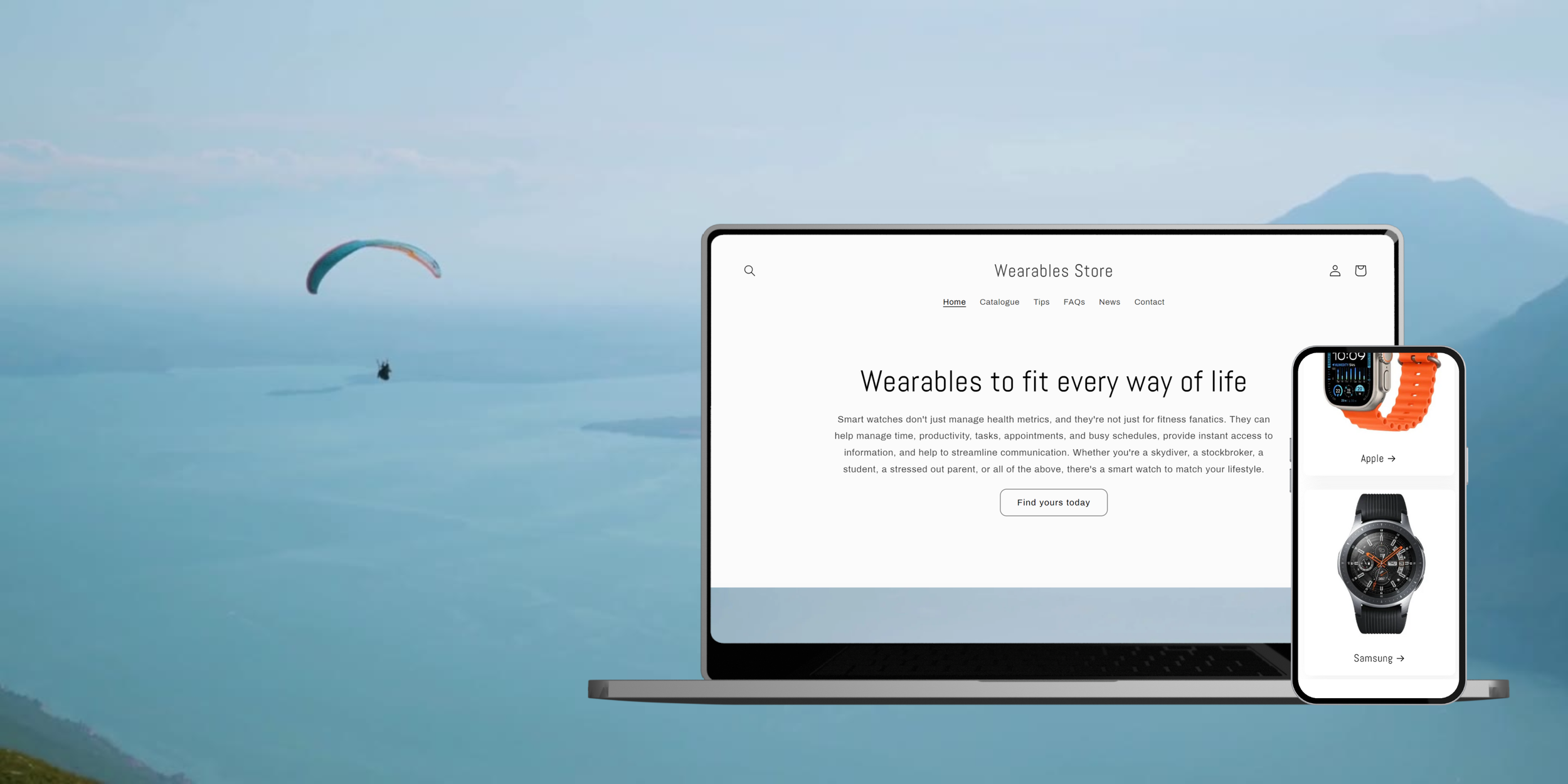
Overview
Client: Smartwatch reseller
Business structure: Sole trader
Lifecycle stage: Maturity
Goal: Growth
Solution: Ecommerce store
Technology: Shopify, Tidio, and Outgrow.
Project duration: 2 weeks
This project is the first in a series of three ecommerce product designs using Shopify. The client here is a smartwatch reseller who has had a hobby store on a marketplace for three years, for which sales figures have plateaued. They are starting to take the hobby store more seriously and want to turn it into a small business by launching a platform ecommerce store with social selling. Their goal is to establish a unique brand, achieving local sales growth, and build a sense of community with the target market. The client has connected the marketplace store to their social media for content sharing, and Shopify is to be integrated with the marketplace and social media, and a blog started, for a trial period, before evaluating its viability.

Analysis
Strategy
“The high cost of commerce doesn’t come from one channel; it comes from the lack of integration across them.” - Accenture, 2023.
Recent industry reports highlight three key observations about ecommerce today: data-driven agility and sales channel integration is key to ecommerce success (Accenture Song, 2023), social commerce is fast overtaking digital commerce in growth, with a trend towards the use of immersive social technology (Shopify Plus, 2023), and personalisation is not only expected, but now enabled by genAI and other advanced analytics (McKinsey & Company, 2023). Findings such as these reflect the thinking of the client, enabled better insight into their present situation and their ideas for how to improve the future of their business, and were incorporated into the solution approach.
Projected social commerce sales worldwide from 2022 to 2026
Source: Shopify Plus (2023) citing Statista
Competitors
A review of similar ecommerce sellers and businesses identified a set of common features among all sites that established a convention, as well as capabilities that were assessed against the client’s strengths and weaknesses, and gaps existing between these sellers and consumer expectations as reported by industry experts which the client could exploit for a competitive edge now or in the near-term. For example, use of augmented reality-enabled 3D configurators for virtual try-ons.
Technology
A detailed exploration and comparison of the client’s selected technologies was undertaken to determine the capabilities, limitations, and requirements of each towards the client’s objectives. The results indicated that use of a marketplace is viable for new sellers with their broad reach, low costs, and easy setup, while platforms offer growth through branding, social selling, built-in blogging, interactive integrations, and potential for targeted marketing.
User Research
User Personas
“As a first-time smartwatch buyer, I want to take a quick quiz that helps me find the best smartwatch based on my lifestyle, preferences, and needs, so that I can narrow down my choices without feeling overwhelmed by the options available.”
“As a previous smartwatch owner, I want to chat on the seller's website to quickly find a smartwatch that meets my specific needs and preferences, so that I can make an informed purchase without spending too much time browsing.”
"As an experienced enthusiast, I want to access cutting-edge information on the seller's website about product launches, major brands, and superuser techniques, so that I can stay ahead of the curve and maximise the value of my device.”
Customer Journey Map: Irena
Roadmap
In planning the design, the needs highlighted through the above research and analysis were translated into requirements such as for data structure and visibility, inventory configuration and management for 120 products, search and filter by major product features, customised product recommendations, a helpful quiz accessible upon first view of the landing page, a live chatbot, comprehensive FAQ page, customer account portal and easy checkout facility, and Tips and News pages with the most up-to-date information and insight into practical smartwatch use. Further, to highlight the aesthetics of the products themselves, which often involve intricate detail, and to prevent competition between the products and the background, or cognitive overload on users trying to assess the products and make a purchase decision, a minimalist design for the overall website was chosen.
Solution Design
Information Architecture
Wireflow
The structure of the website was built around facilitating Home page access to the information needed for decision-making identified in the three main use cases of the first-time buyer, previous owner, and experienced enthusiast.
Each user seeking to make a purchase should be able to find what they need in an enjoyable, intuitive, and aesthetic way through landing on the Home page, with visual invitations to explore and engage further with the site placed unobtrusively on each page.
The first-time buyer can access a quiz using a button placed in the top section of the Home page, which will provide product recommendations based on their lifestyle, needs, and preferences.
The previous owner can use the chatbot placed in the bottom corner of the Home page and every page of the website to ask a question based on their own knowledge of their smartwatch needs and preferences, and the information displayed.
The experienced enthusiast can use the search button, Brand previews, or Catalogue page link to find exactly what they are looking for, whether the latest model of a brand, or watches with bands only of a certain colour or material. From the Home page they can also see previews of the latest wearables news articles published by the seller, and subscribe to updates.
Branding & Visual Design
Interactive Features
Quiz
Outgrow was used for the quiz, as it offers a wide variety of interactive web features and tools, it is very easy to integrate with Shopify, provides a lot of helpful user information, and it is within the client’s budget after a free trial
A cover was added to the quiz, a set of 10 questions was created based on factors to be considered by prospective smartwatch buyers, and the products mapped to each answer to form the recommendations.
The quiz was then tested in each use case identified in the initial user research, and the questions improved in their wording, sequence, the answer options, and the recommendations given for each answer set.
Quiz Use Case Video: Irena uses the Quiz and Chatbot to find the right watch for her (1:59m).
Chatbot
Tidio was selected for the live chatbot feature due to its ease of setup and maintenance, helpful information available, adequate customisation, and affordability, with a free one-month trial for new users.
A set of 10 questions and answers were created based on the three main user personas for initial testing, and these were refined and expanded to a total of 25 questions based on the seller’s experience.
The client has the option at a later time to set up the AI Chatbot Lyra based on the website FAQs, which can also be further developed and refined to be able to deal with a broader range of enquiries effectively.
Chatbot Use Case Video: Maryam uses the Chatbot and Quiz to search for a gift (2:08m).
Search & Discovery
The Shopify Search & Discovery app was installed into the store and the product information of 120 inventory items synced from the original marketplace store using Shopify Marketplace Connect.
Google Product Categories were added via Shopify Admin using bulk editor, and the Shopify taxonomy was used to configure other product characteristics in preparation for filtering and recommendations.
Filters were added for each Collection page representing the different brands, the Product Recommendation section reviewed in Shopify Admin, and testing and modification undertaken to finalise.
Search & Discovery Use Case Video: Ryan finds a new watch using Search & Discovery (1:44m).
The Story of the Recommender
Recommenders are so common today that we almost take them for granted. Even though they only became popularised with the growth of the Internet and then ecommerce from the 1990s, people have been trying to find a way to make computing more human through personalised information retrieval for a long time. Many say it all started when Elaine Rich created ‘Grundy’ in 1979 to make it easier for people to find books that they like. Read more…
Key Landing Pages
Summary
CHALLENGE
Client need to grow business locally through social ecommerce not able to be met by existing marketplace account.
SOLUTION
Setting up and integrating a platform store into the marketplace store, starting a blog, and installing social media apps to enable social selling.
LESSONS
The value of product data, its structure, and classification in any ecommerce platform, and how this translates across platforms in an integration.
Iteration of ideas and their implementation - the concept of branding in a way that avoids the cliche of wearables being only for sports people or adrenaline junkies. Although the store design omits this angle, it doesn’t sufficiently emphasise the angle that the brand is wanting to take in showing its use for holistic goal management.
In future projects I would omit the cover from the quiz. Although it provides the opportunity to add an interesting image to the start of the quiz, it requires the user to click another button to start it.
REFERENCES
Accenture Song (2023). Commerce without compromise: How to reinvent commerce for relevance without sacrificing probability.
Shopify Plus (2023). Commerce Trends 2023.
McKinsey & Company (2023). How generative AI can boost marketing.
*Synthetic content used in ecommerce store articles and FAQs for demonstration purposes

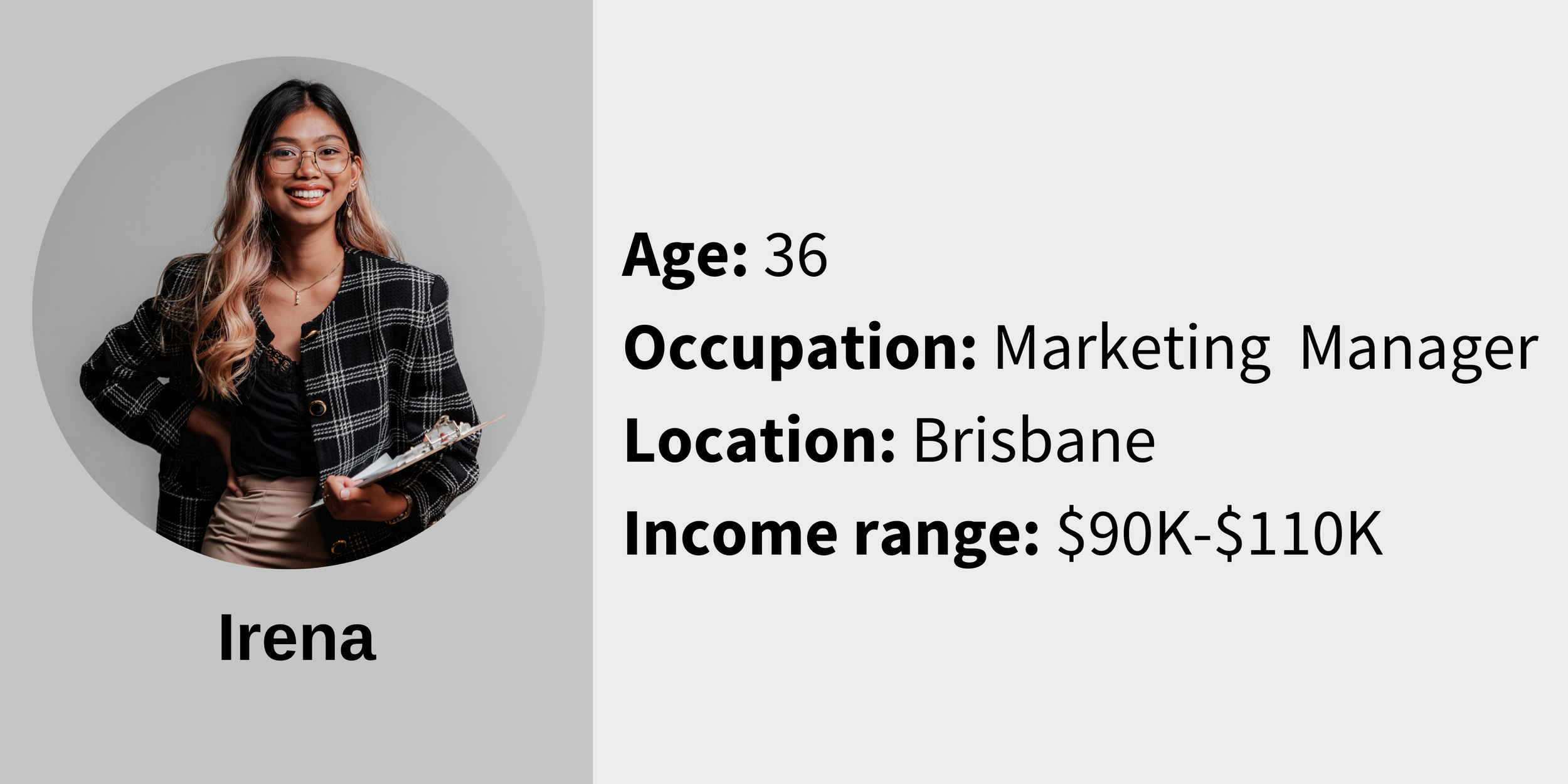
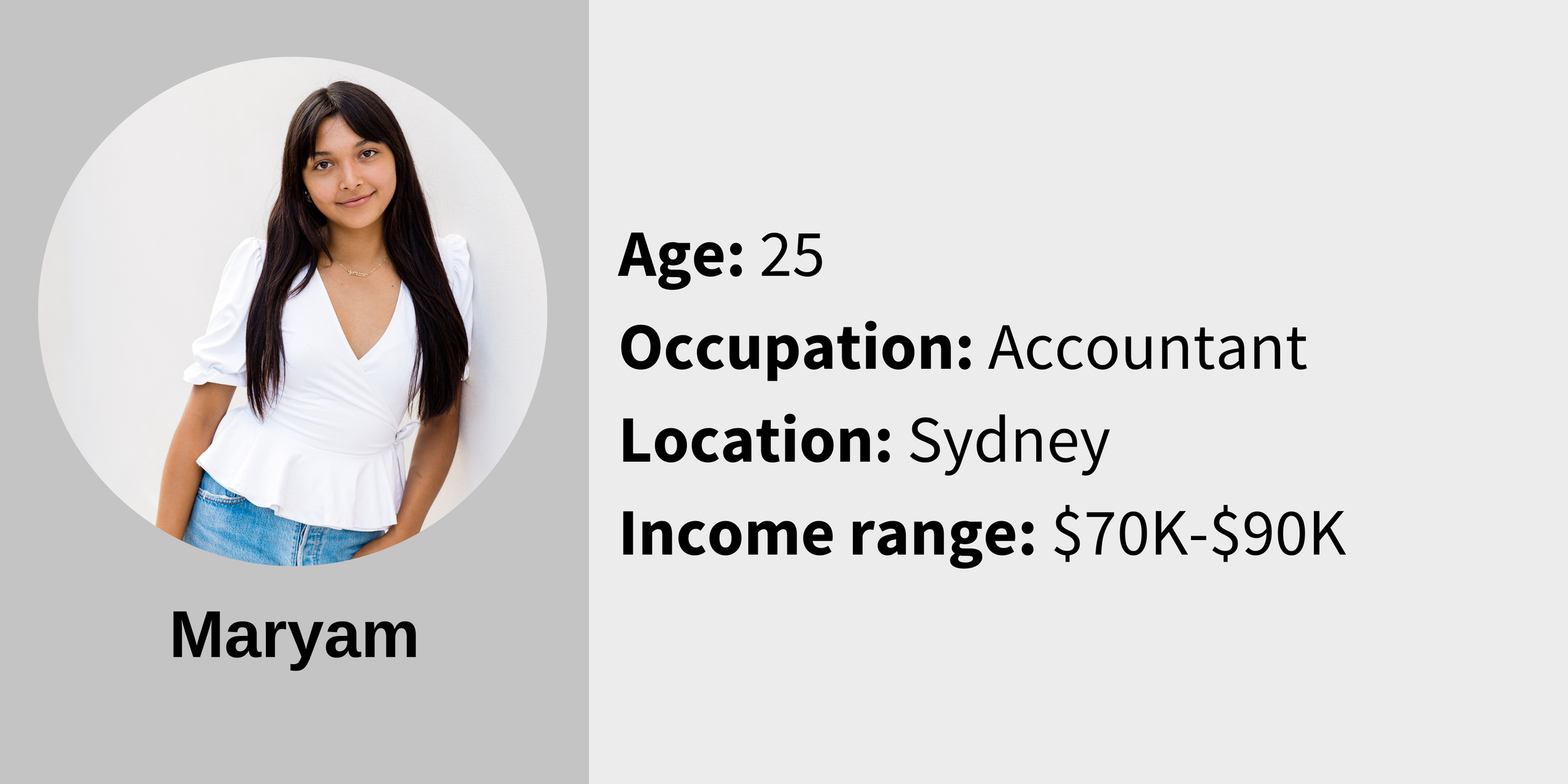
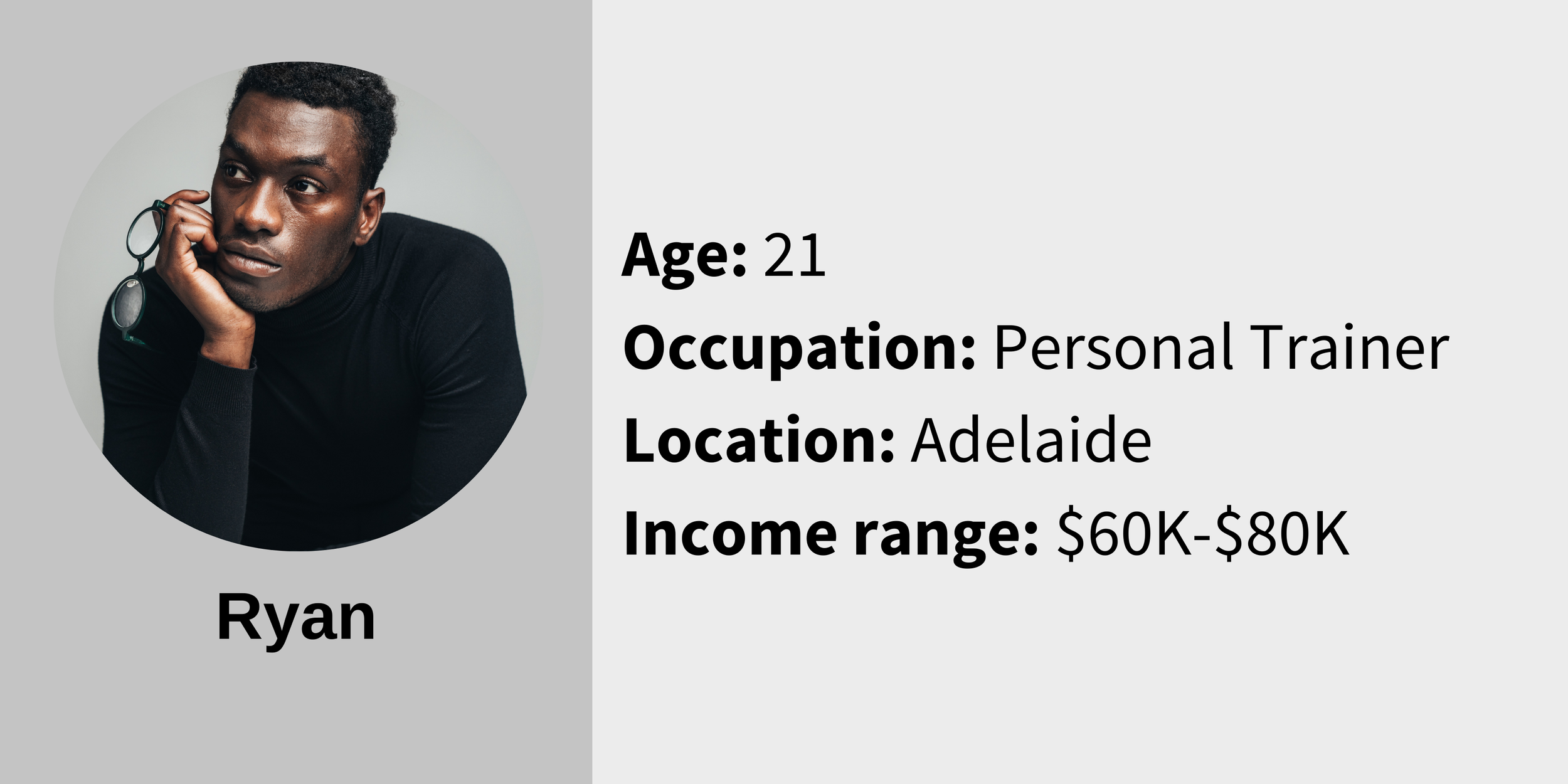

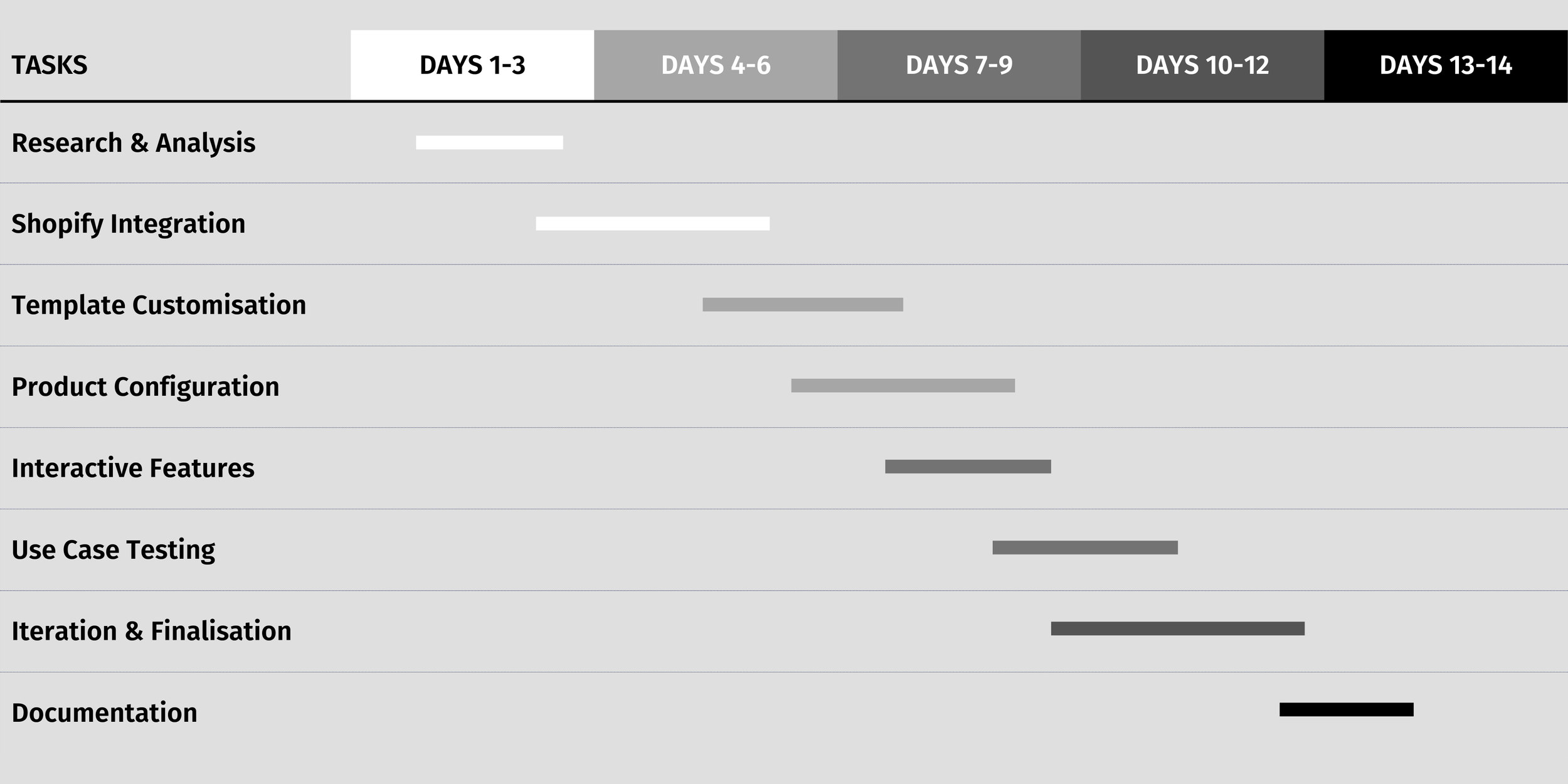


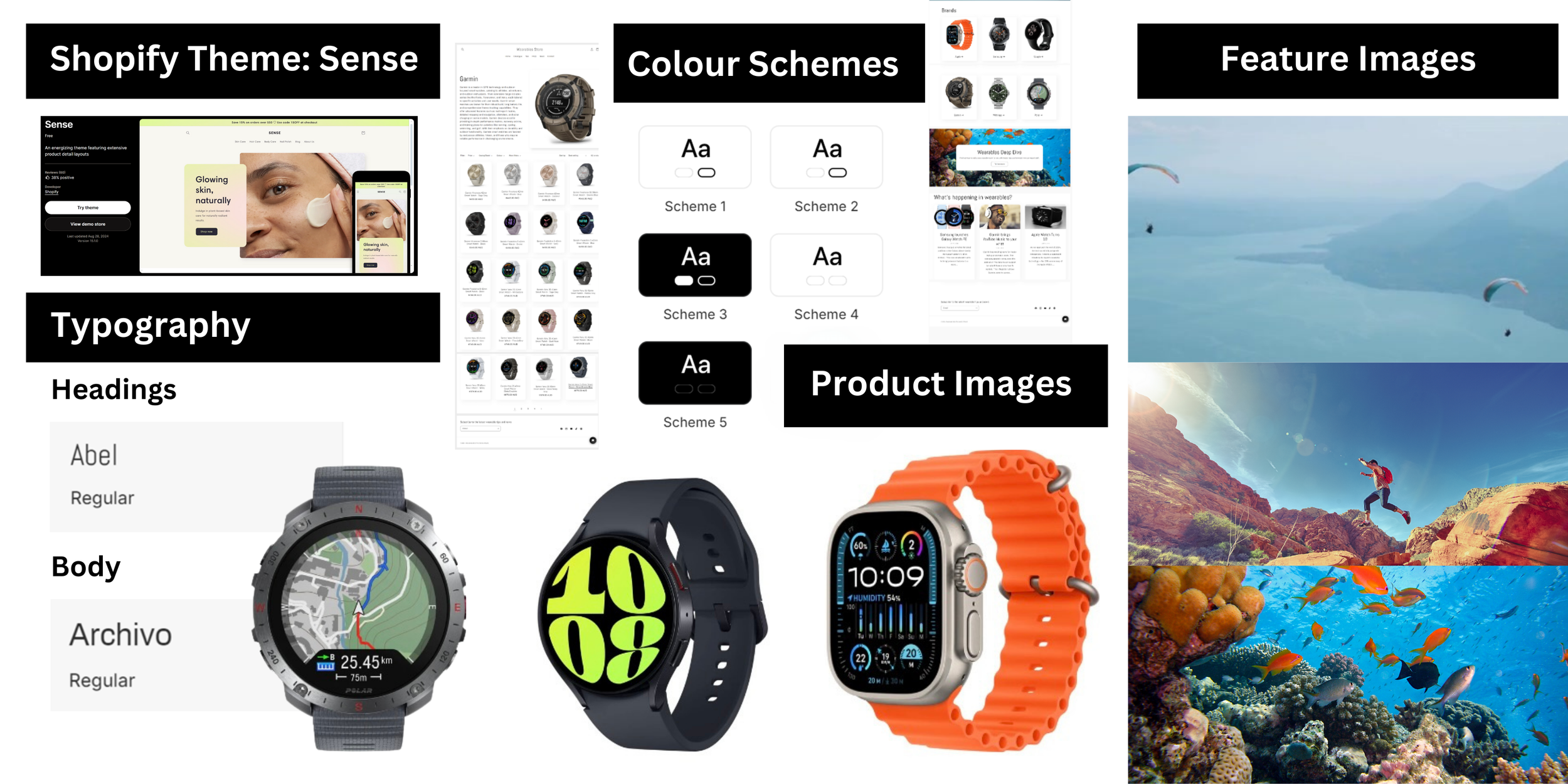
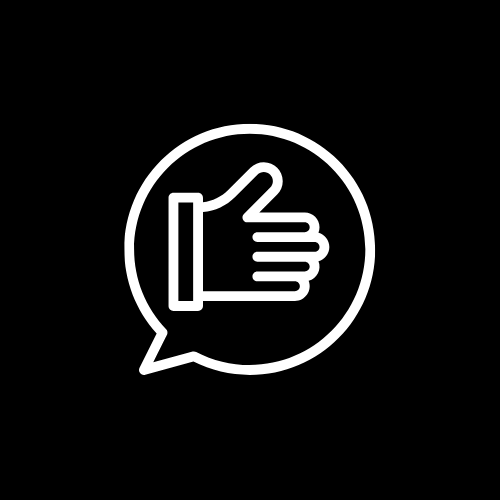

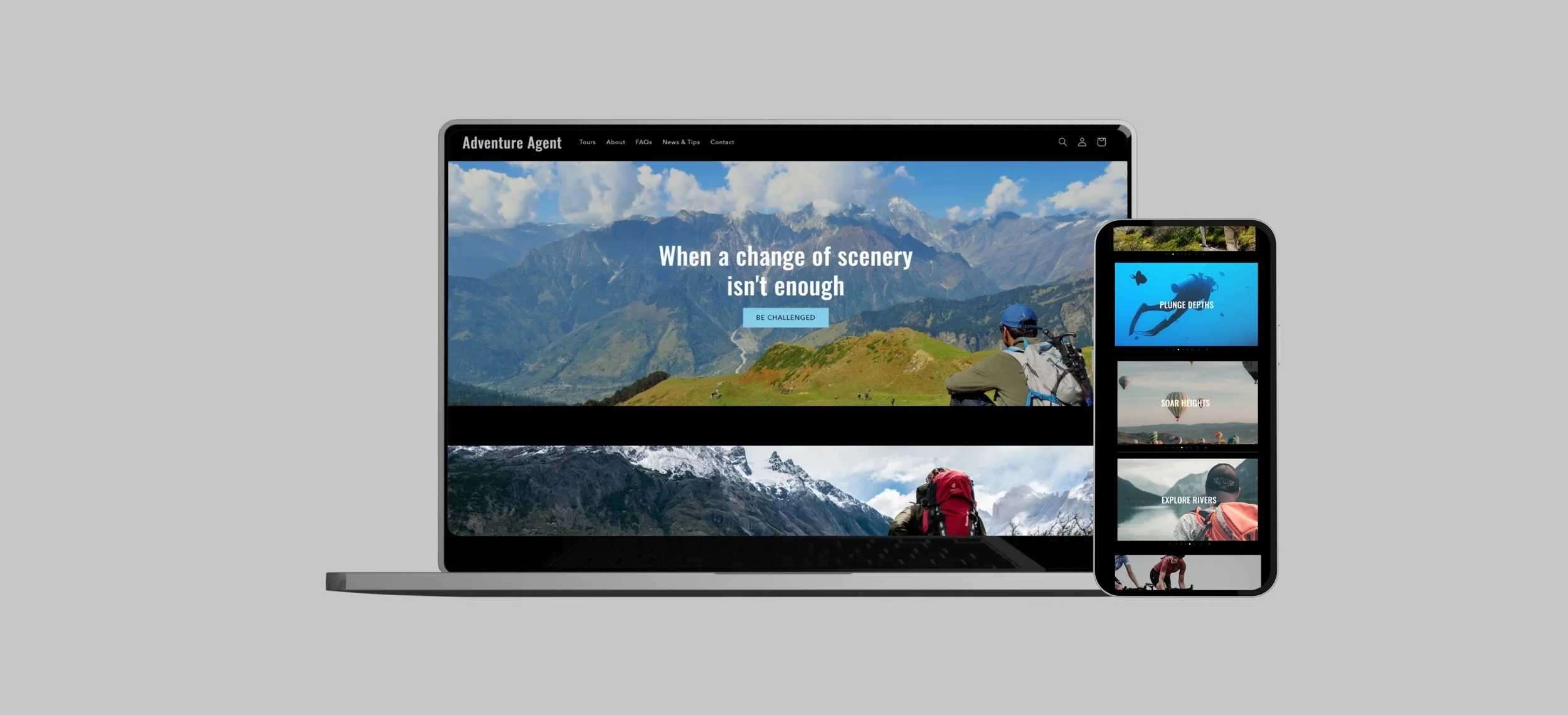
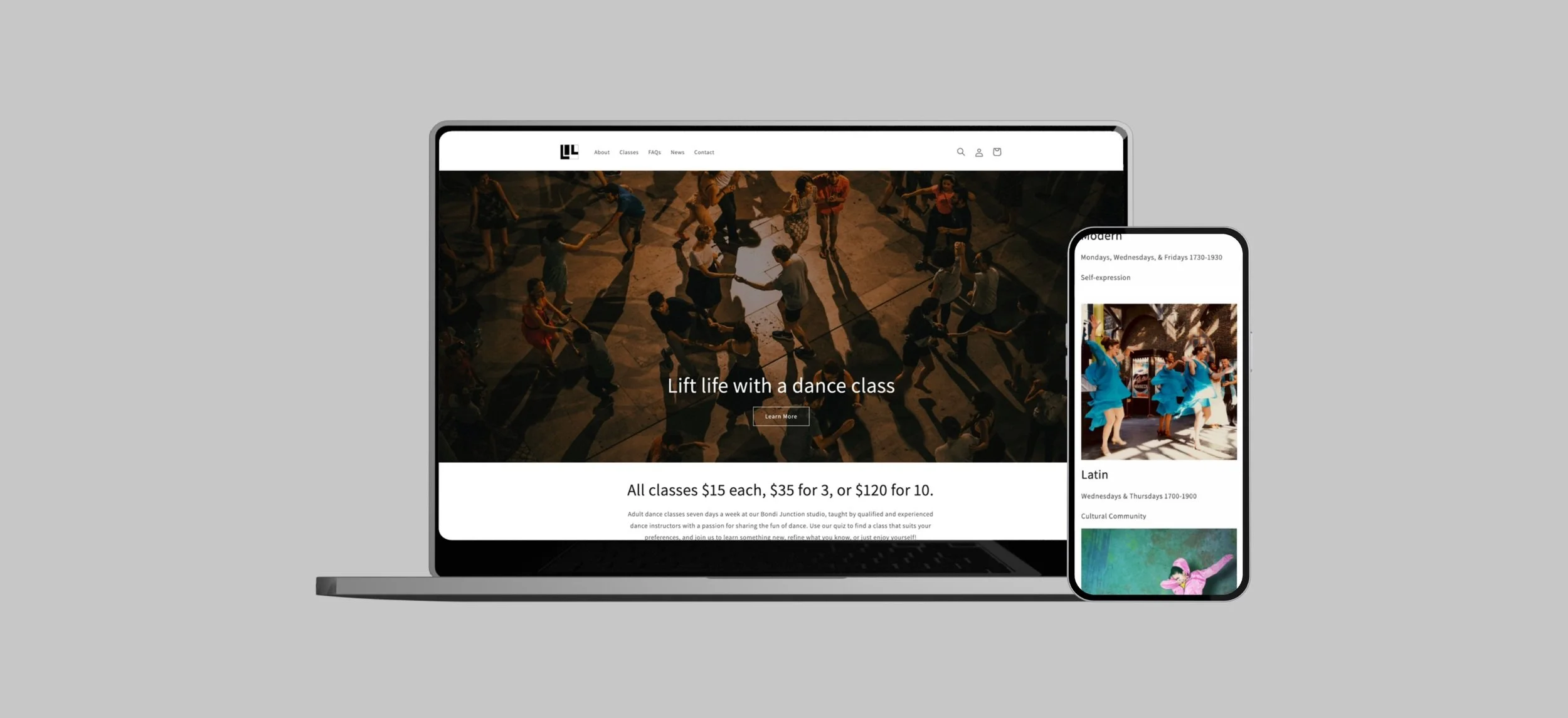
Facebook Ad
Instagram Ad
Pinterest Ad
Back to top ^